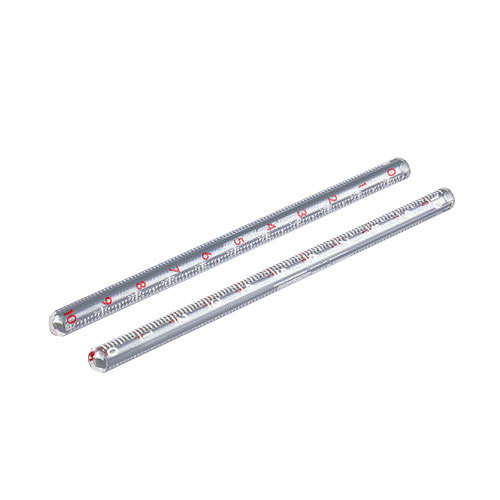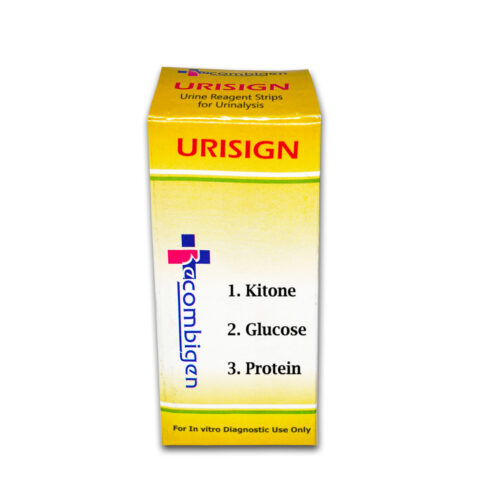Wintrobe Tube
₹7,500.00 ₹3,951.00
| Usage/Application | Blood Testing |
| Color | Clear |
| Brand | Recombigen |
| Design Type | Tube |
| Type Of Glassware | Borosilicate 3.3 |
| Size/Dimension | 120 mm Length |
| Minimum Order Quantity | 5000 Piece(s) |
Wintrobe technique
The Wintrobe procedure is carried out identically, however the Wintrobe tube is only 100 mm long and has a smaller diameter than the Westergren tube. After one hour, the rate of red blood cell loss in millimetres is measured in the tube using EDTA anticoagulated blood that hasn’t been given any additional diluent. This method is less sensitive than the Westergren method since the greatest possible aberrant value is smaller due to the shorter column. This approach is more useful for demonstrations, though. Healthy males typically have values of around 15mm/hr; healthy females typically have values of around 20mm. Both genders’ values rise modestly as they get older.Wintrobe Tube Uses
In medical laboratories, the Wintrobe tube is typically used to assess the erythrocyte sedimentation rate (ESR). ESR is a generalised marker of inflammatory activity in the body. The Wintrobe tube allows blood samples to settle and separate into layers, with the plasma remaining on top and the red blood cells (erythrocytes) settling at the bottom. The ESR can be calculated by calculating the distance that the red blood cells have settled over a given amount of time. The Wintrobe tube has many uses outside ESR measurement, including: 1. Calculating hematocrit: Hematocrit is a measurement of the proportion of red blood cells in blood volume. By directly measuring the column of packed red blood cells, the Wintrobe tube can be used to measure the packed cell volume (PCV) or hematocrit. 2.Calculating haemoglobin levels: Using the Wintrobe tube, the haemoglobin levels can be calculated by measuring the hematocrit and knowing the mean corpuscular volume of red blood cells. 3.The Wintrobe tube can be used to study the sedimentation pattern of red blood cells and spot any irregularities, like rouleaux development (clumping of red blood cells), which could be an indication of a number of diseases or ailments. In haematology labs, the Wintrobe tube is a versatile instrument used for various assessments of red blood cells and inflammation.FAQ
Yes, erythrocyte sedimentation rate (ESR) is frequently measured using the Wintrobe tube. A general indicator of inflammation in the body is the ESR. The Wintrobe tube is a specifically made glass tube that enables blood samples to settle and separate into layers, with the plasma remaining above and the red blood cells (erythrocytes) settling at the bottom. The ESR can be calculated by calculating the distance that the red blood cells have settled over a given amount of time. Calibrated measurements that are marked on the Wintrobe tube help determine the ESR value.
Both the Wintrobe tube and the Westergren tube are frequently used to test the erythrocyte sedimentation rate (ESR), although they differ in some ways in terms of construction and techniques of measurement.
1. Design: The Wintrobe tube is a shorter, broader glass tube that normally has an internal diameter of 2 mm and measures roughly 110 mm in length. It requires less blood for the test and has a smaller bore size. The Westergren tube, on the other hand, is a longer, thinner glass tube with an internal diameter of 2.5 mm and a usual length of 300 mm. Both the bore size and the amount of blood needed are larger.
2. Graduations: The exterior side of the Wintrobe tube is marked with a 0-100 mm scale, enabling direct reading of the sedimentation rate.
You must be logged in to post a review.

 Rapid Diagnostic Products
Rapid Diagnostic Products Serology Products
Serology Products Clinical Lab Accessories
Clinical Lab Accessories OTC Products
OTC Products Water Quality Test Kit
Water Quality Test Kit 










Reviews
There are no reviews yet.